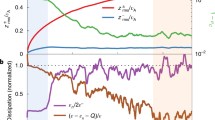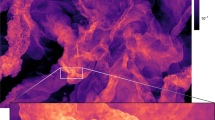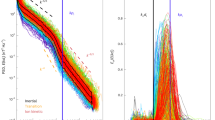Abstract
IT is well known that the density gradient in the solar chromosphere is vastly less than what it would be in ordinary gravitational equilibrium. This was a complete enigma until the advent of Milne's theory of selective radiation pressure in the case of ionised calcium. This theory has had many successes but does not seem to admit of generalisation to gases like hydrogen and helium which are present in abundance. It even seems that the radiation pressure is important for Ca+ only if enough hydrogen is there initially to prevent excessive ionisation (McCrea, Mon. Not. R.A.S., 89, p. 843; 1929; NATURE, April 6, 1929, p. 527). We have still to explain the presence of these gases.
This is a preview of subscription content, access via your institution
Access options
Similar content being viewed by others
Author information
Authors and Affiliations
Rights and permissions
About this article
Cite this article
MCCREA, W. Turbulence in the Sun's Atmosphere. Nature 124, 442–443 (1929). https://doi.org/10.1038/124442a0
Issue Date:
DOI: https://doi.org/10.1038/124442a0
Comments
By submitting a comment you agree to abide by our Terms and Community Guidelines. If you find something abusive or that does not comply with our terms or guidelines please flag it as inappropriate.



